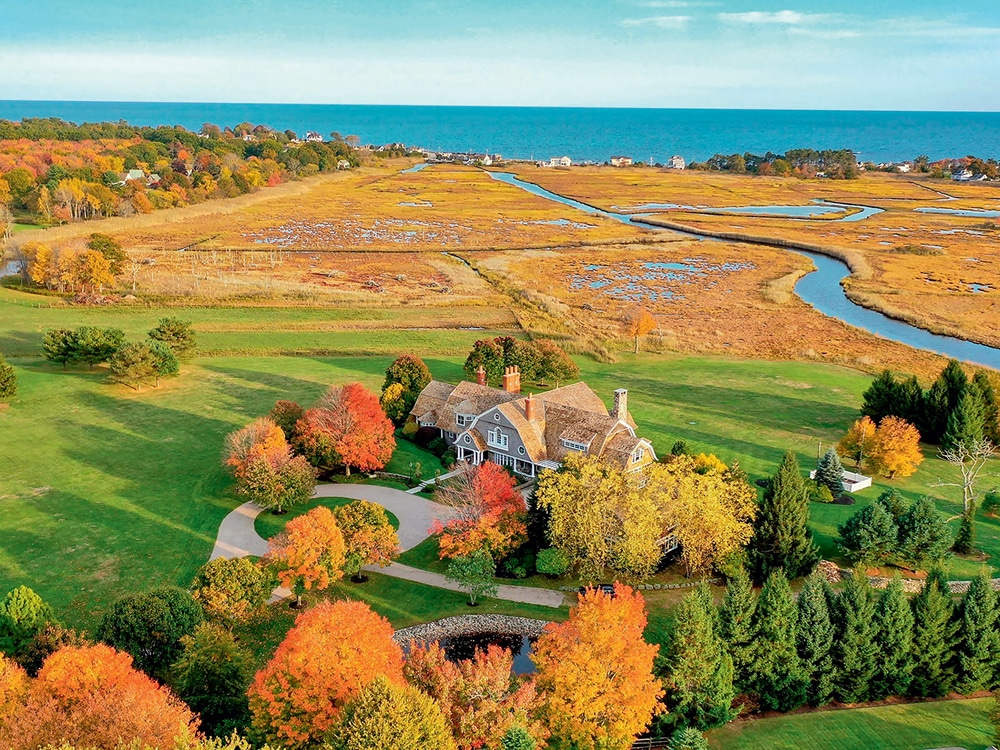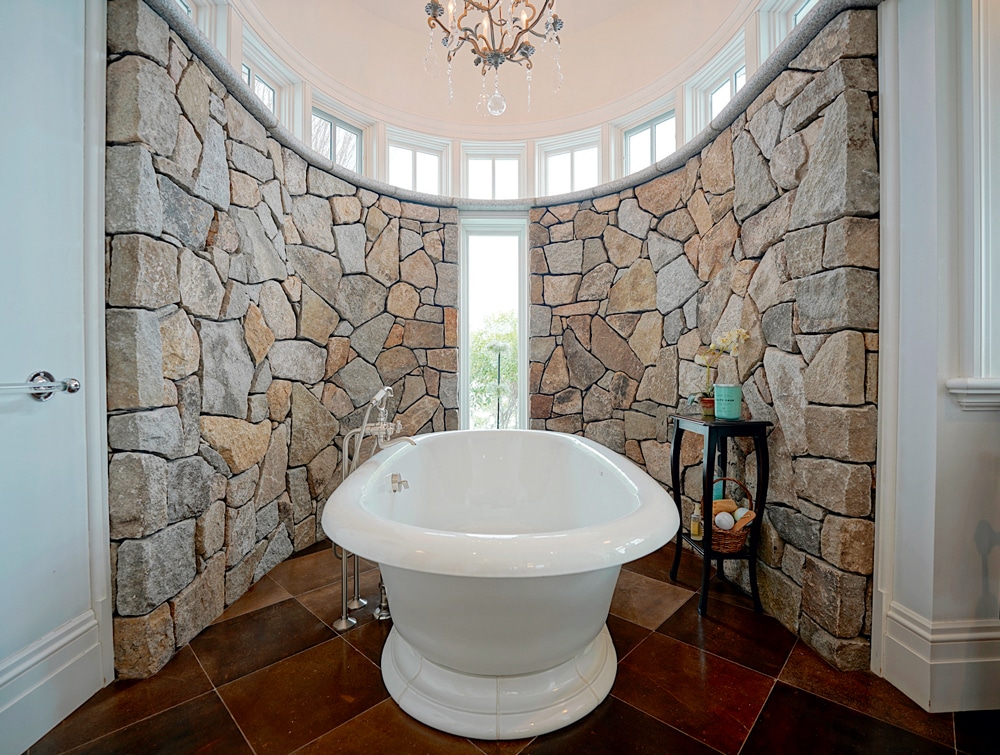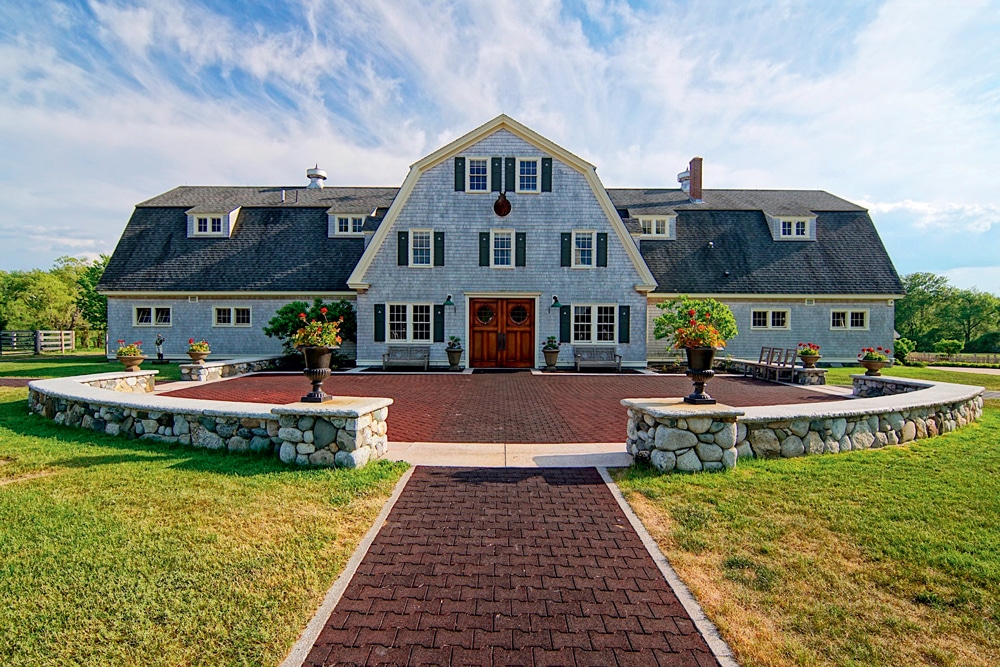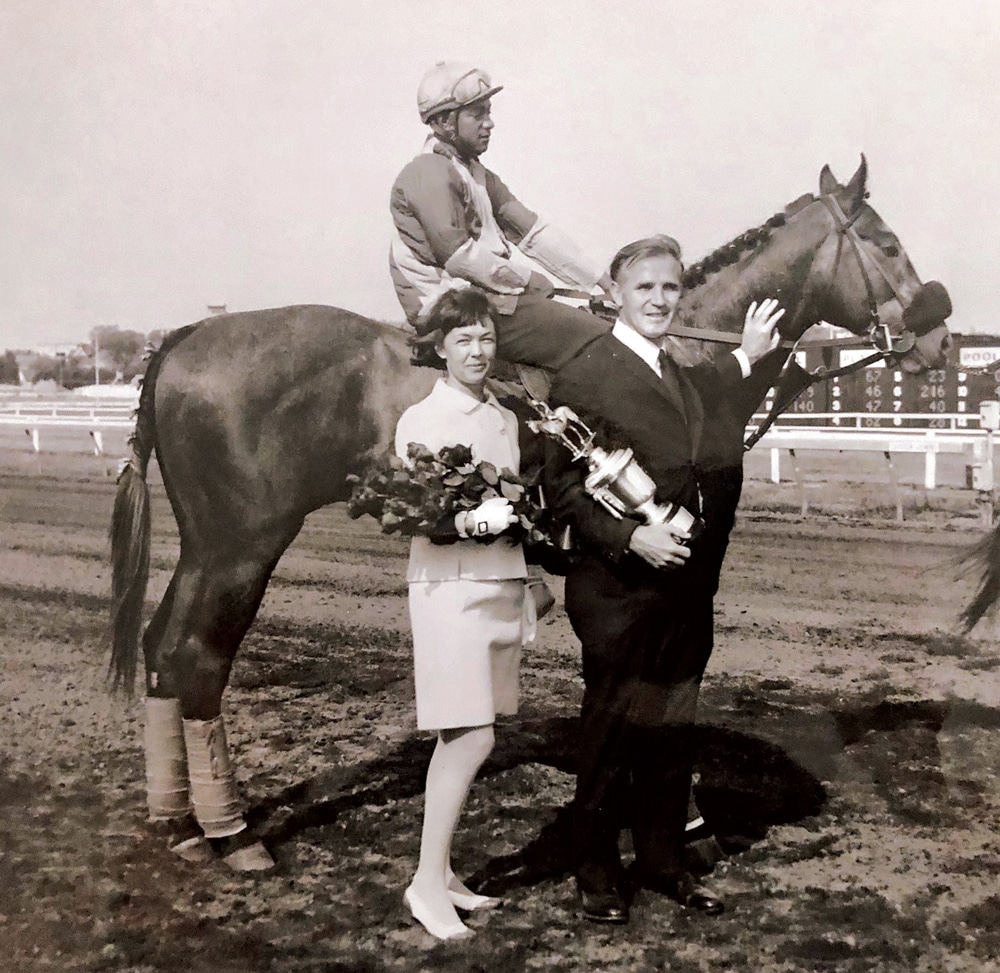A Place to Prance at Runnymede Farm in Coastal New Hampshire | House for Sale
Horse lovers, this coastal New Hampshire farm with a 8,500-square-foot mansion and a Derby backstory could be yours.

An aerial view of Runnymede Farm showing the main residence, an 8,500-square-foot mansion.
Photo Credit : Walter Jalbert
Photo Credit : Walter Jalbert
Little more than a stone’s throw from the Atlantic Ocean, in North Hampton, New Hampshire, there sits a working horse farm so idyllic that it’s hard to imagine one of the great controversies of modern sports having roots in these rolling meadows and coastal salt marshes.
Located less than an hour north of Boston, the 58-acre expanse dubbed Runnymede Farm actually comprises five unique properties, including an 8,500-square-foot mansion, a c. 1900 guest house, and a restored barn. The address, 4 Dancers Image Lane, is a callout to the farm’s most famous former resident: Dancer’s Image, winner of the 1968 Kentucky Derby—for a time, anyway. (But more on that later.)
While the farm’s five parcels are available separately, the hope is that they will be sold as one. “Runnymede Farm is an iconic property, and our aim is to protect it,” says listing agent Tony Jalbert, gesturing toward the swaying grasses of the Little River Salt Marsh. “I guarantee, if you stand here for 20 minutes, you’ll see a buck jump. What other barn has a view like this?”

Photo Credit : Mike Barron
Built in 2001, the shingle-style mansion has six bedrooms, nine bathrooms, five fireplaces, and luxuries galore, from hand-planed walnut floors and custom iron light fixtures, to a wine cellar replete with old-world cabinetry. The third-floor media room features ocean views, while the European-style kitchen boasts a French La Cornue range; there’s an infrared sauna in the exercise suite. The warmth of the paneling and woodwork throughout contrasts with the polished marble of the kitchen and pantry countertops and the Tunisian stone floor of the master bath.

Photo Credit : Mike Barron
Meanwhile, equine residents can settle into the 4,080-square-foot barn, which has 12 stalls. There’s also a heated tack room, a bathing bay with hot and cold water, a kitchen, an office, and a caretaker’s residence. Nine fenced-in acres include a riding rink and a jumping area, and infrastructure is in place for an indoor riding rink.

Photo Credit : Mike Barron
Runnymede started in 1923 as a dairy farm owned by former Massachusetts governor Alvan Fuller, a summer resident of North Hampton. (The next time you’re stuck in Boston traffic, you can thank Fuller, whose dealership imported the first automobiles to the city in 1899.) When the farm passed to Alvan’s son Peter, however, the Guernseys gave way to thoroughbreds.
Peter Fuller was a successful businessman, having taken over his father’s car dealership. An amateur boxer and wrestler in his youth, he also flirted with sports management, guiding the career of Massachusetts heavyweight Tom McNeeley, who fought for the world championship in 1961. (Today McNeeley is best remembered as the father of “Hurricane” Peter McNeeley, who fought Mike Tyson in one of the most-watched boxing matches of all time, in 1995.)
But it was in the world of horse racing that Fuller experienced his highest highs and lowest lows. In 1964, he bred the mare Noor’s Image with the celebrated racehorse Native Dancer. Their colt was first named Alvan T., after Fuller’s father, and then rechristened Dancer’s Image when Fuller, believing the horse’s ankles were weak, opted to sell him. His wife, Joan, however, liked Dancer’s Image and convinced him to buy his own horse back at auction.
A few years later, in 1968, Dancer’s Image pulled away down the stretch to win the 94th Kentucky Derby by 1½ lengths. But when a post-race test found the anti-inflammatory drug phenylbutazone in his system, he was disqualified. It marks the only time in the Derby’s nearly 150-year-long history that the official winner was removed. (At the time of this writing, the fate of Medina Spirit, the 2021 Derby winner who subsequently failed a drug test, was still being debated.)

Photo Credit : courtesy of Suffolk Downs
Fuller appealed the disqualification of Dancer’s Image, kicking off a lengthy legal battle. Phenylbutazone, or “bute,” was legal in training but not in competition. Fuller acknowledged that Dancer’s Image had received a shot six days before the Derby to alleviate pain in his ankles; however, bute typically clears a horse’s system in 72 hours. No conclusive explanation was ever found for why it was present in Dancer’s Image on race day.
For his part, Fuller suspected foul play. Earlier that year, when Dancer’s Image won a race two days after the assassination of Martin Luther King Jr., Fuller had donated his winnings to King’s widow, Coretta Scott King. Fuller said his support of the Kings may have spurred someone to tamper with either his horse or the test results.
Fuller never had another Derby contender but did continue to raise winning horses, most notably Mom’s Command, who was ridden by Fuller’s daughter Abby to the 1985 New York Filly Triple Crown and later enshrined in the National Museum of Racing and Hall of Fame.
Today a billboard on the property commemorates the achievements of Dancer’s Image and Mom’s Command. What possibilities might rise next from these fields of dreams?
Runnymede Farm in its entirety is being offered for $25 million. For more information, contact Tony Jalbert at Tate & Foss Sotheby’s International Realty at 603-498-6241 or go to tonyjalbert.com.
Joe Bills
Associate Editor Joe Bills is Yankee’s fact-checker, query reader and the writer of several recurring departments. When he is not at Yankee, he is the co-owner of Escape Hatch Books in Jaffrey, NH.
More by Joe Bills

